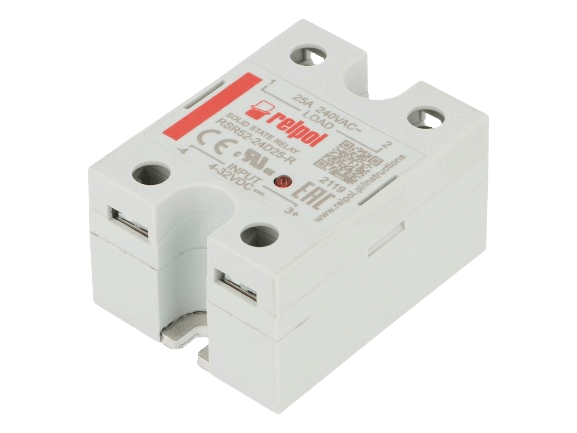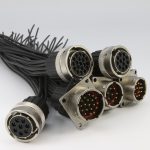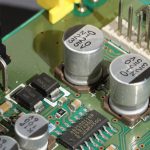
Introduction
Semiconductor Automated Test Equipment (ATE) plays a pivotal role in the semiconductor manufacturing process, ensuring the integrated circuits (ICs) meet the desired specifications and quality standards. One of the key components in ATE systems that help optimise testing processes and minimise losses is Solid State Relays (SSRs). This blog post demonstrates the significant role SSRs play in low-loss semiconductor ATE, exploring their functions, advantages, and impact on overall testing efficiency.
Understanding Semiconductor Automated Test Equipment: Purpose and Importance
Semiconductor ATE refers to the specialised machinery used in semiconductor manufacturing facilities to evaluate and validate the performance of individual semiconductor devices, such as ICs, microprocessors, and memory chips. Its primary purpose is to ensure each component meets the required specifications and quality standards before they are incorporated into finished products.
ATE is crucial for quality control, as it helps detect faulty components early in the production process, reducing the chances of defective products reaching the market. Furthermore, ATE enhances productivity by automating testing processes, improving accuracy, and reducing human errors.
Introduction to Solid-State Relays
Solid State Relays are electronic switching devices that perform the same function as traditional electromechanical relays but without any moving parts. They are designed to switch electrical circuits on or off and are composed of (harness) semiconductors, such as thyristors and triacs. SSRs offer several advantages over mechanical relays, making them ideal for semiconductor ATE applications. Additionally, they also find versatile applications in several fields where fast switching, long service life, and high reliability are required.
Exploring The Role of SSRs in Low-Loss Semiconductor ATE
SSRs are used in semiconductor ATE systems for various functions, including:
- High-Speed Switching: SSRs can rapidly switch between states, making them suitable for high-frequency testing applications.
- Signal Routing: SSRs facilitate the routing of test signals to different test points on semiconductor devices, allowing precise and controlled testing.
- Temperature Control: SSRs help regulate temperature-sensitive components, ensuring stable test conditions.
- Voltage and Current Control: SSRs enable precise control over voltage and current levels during testing, ensuring accurate measurements.
Unparalleled Advantages of Solid State Relays in Semiconductor ATE
Solid-state relays offer unprecedented advantages in semiconductor ATE systems due to their unique construction and operating principles. Some of the main benefits include:
- Low-Loss Operation – One of the primary advantages of using SSRs in semiconductor ATE is their low-loss operation. Unlike mechanical relays, SSRs do not have moving parts, reducing the risk of contact bounce and minimising energy losses during switching––leading to more accurate and efficient testing processes.
- High Reliability – SSRs offer high reliability due to their solid-state design – no moving parts. They are less prone to wear and tear, ensuring long-term operation without requiring frequent maintenance or replacement.
- Compact Size – SSRs are compact and take up less space in ATE systems compared to bulky mechanical relays. This compact size allows for more efficient use of space in semiconductor testing equipment.
- Precision Control – SSRs offer precise control over voltage and current, making them suitable for testing the most sensitive semiconductor components. This level of control ensures accurate measurements and minimises damaging devices during testing.
- Noise-Free Operation – SSRs generate minimal electrical noise during operation, making them particularly important in semiconductor testing, where electrical noise can interfere with the accuracy of test measurements and the integrity of the device under test.
- Better Thermal Management – SSRs are more efficient in managing heat generation, a critical aspect in maintaining the accuracy and reliability of semiconductor testing procedures. Efficient thermal management helps in prolonging the life of both the SSR and the ATE system.
SSRs Also Impact Testing Efficiency in Semiconductor ATE
Integrating SSRs in semiconductor ATE setups also enhances testing efficiency in many ways:
- Reduced Test Time – Using SSRs in semiconductor ATE leads to reduced test time. Their high-speed switching capabilities enable rapid test sequence execution, contributing to higher throughput in manufacturing processes.
- Improved Test Accuracy – With SSRs, semiconductor ATE systems can provide more accurate and repeatable results. This enhances the quality control process by minimising measurement errors, ultimately leading to the production of higher-quality semiconductor components.
- Energy Efficiency – SSRs consume less energy compared to mechanical relays, resulting in energy cost savings and reducing the environmental impact of semiconductor manufacturing facilities.
SSRs in Semiconductor ATE Systems: Future Perspectives
The ongoing advancement in semiconductor technologies demands continuous improvement in testing methodologies and equipment. Solid State Relays are poised to play an even more significant role in developing next-generation semiconductor ATE systems. Innovations in SSR technology, such as enhanced thermal management, lower on-state resistance, and improved switching characteristics, will further boost the efficiency and capability of semiconductor testing.
Takeaway
Solid State Relays are indispensable components in low-loss semiconductor Automated Test Equipment systems. Their solid-state design, low-loss operation, high reliability, compact size, and precision control make them essential for optimising semiconductor testing processes. SSRs not only contribute to enhanced testing efficiency but also play a pivotal role in maintaining the high quality and reliability of semiconductor devices, ensuring they meet the strict standards of the industry. As semiconductor technology continues to advance, the role of SSRs in ATE systems will become evident in meeting the demands of the industry.





















